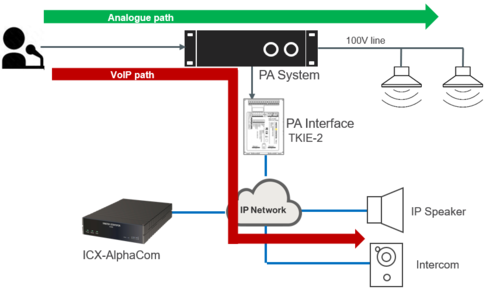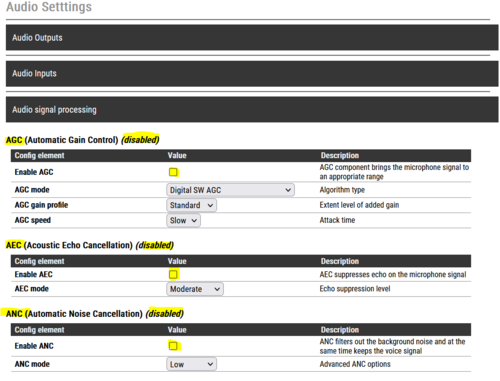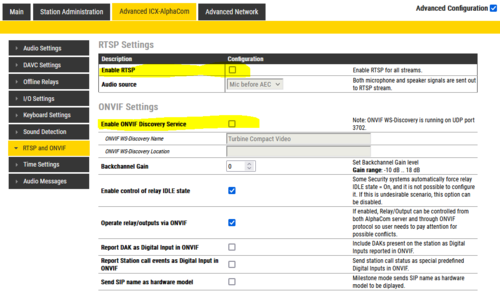Low Latency audio: Difference between revisions
From Zenitel Wiki
No edit summary |
No edit summary |
||
| Line 11: | Line 11: | ||
Typical scenarios where high latency might become an issue is: | Typical scenarios where high latency might become an issue is: | ||
* PA-Announcement where the operator hear his own announcement from nearby VoIP devices, such as IP Speakers, Intercoms, or a PA system connected via a VoIP interface. | * PA-Announcement where the operator hear his own announcement from nearby VoIP devices, such as IP Speakers, Intercoms, or a PA system connected via a VoIP interface. | ||
* Systems with a mix of analogue and digital audio paths. Audio from the operator is distributed partly to main PA speakers through the analogue path, and partly to speakers via a digital (VoIP) path. The analogue path will have close to zero delay, while the digital path will have some delay. | * Systems with a mix of analogue and digital audio paths. Audio from the operator is distributed partly to main PA speakers through the analogue path, and partly to speakers via a digital (VoIP) path. The analogue path will have close to zero delay, while the digital path will have some delay. Too much delay will result in echo when one can hear audio coming from both paths. | ||
A latency of 150 ms is barely perceptible and thus acceptable. However, anything over that, the quality and consistency of the call starts to decline. Latency is unacceptable at 300 ms or greater. | A latency of 150 ms is barely perceptible and thus acceptable. However, anything over that, the quality and consistency of the call starts to decline. Latency is unacceptable at 300 ms or greater. | ||
Revision as of 13:56, 26 May 2023
 |
| Mixed analogue and digital audio paths |
Latency refers to the delay between when an audio signal enters a system and when it emerges. Excessive audio latency has the potential to degrade call quality.
Typical scenarios where high latency might become an issue is:
- PA-Announcement where the operator hear his own announcement from nearby VoIP devices, such as IP Speakers, Intercoms, or a PA system connected via a VoIP interface.
- Systems with a mix of analogue and digital audio paths. Audio from the operator is distributed partly to main PA speakers through the analogue path, and partly to speakers via a digital (VoIP) path. The analogue path will have close to zero delay, while the digital path will have some delay. Too much delay will result in echo when one can hear audio coming from both paths.
A latency of 150 ms is barely perceptible and thus acceptable. However, anything over that, the quality and consistency of the call starts to decline. Latency is unacceptable at 300 ms or greater.
As from firmware ver. 7.5.3.1 the device software has been tuned, making it possible to significantly reduce the latency when required.
Reduce VoIP delay for PA-interface
When a VoIP kit is used as PA interface, one can reduce the digital signal delay by turning off all digital Voice Processing.
Log into the web interface of the VoIP kit, enable "Advanced Configuration" mode, and navigate to Audio Settings > Audio Signal Processing. Disable all processing blocks as shown below. This will reduce latency with about 60 ms.
 |
| Disable audio processing features |

|
Disabling Voice Processing should only be done on devices that are not used for regular point to point calls |
Latency can be further reduced by disabling “RTSP and ONVIF” on both the sender and the receiver end. This will reduce end-to-end delay with 20-30 ms more.
 |
| Disable RTSP and ONVIF |

|
Only to be disabled on devices not in an ONVIF system, and not using RTSP for direct audio streaming |
In addition to the above configuration, some general improvements have been made on the Receive Jitter Buffer handling, ensuring even lower latency.
In total the end-to-end latency should be down to 50-60 ms with all the above measures activated.
